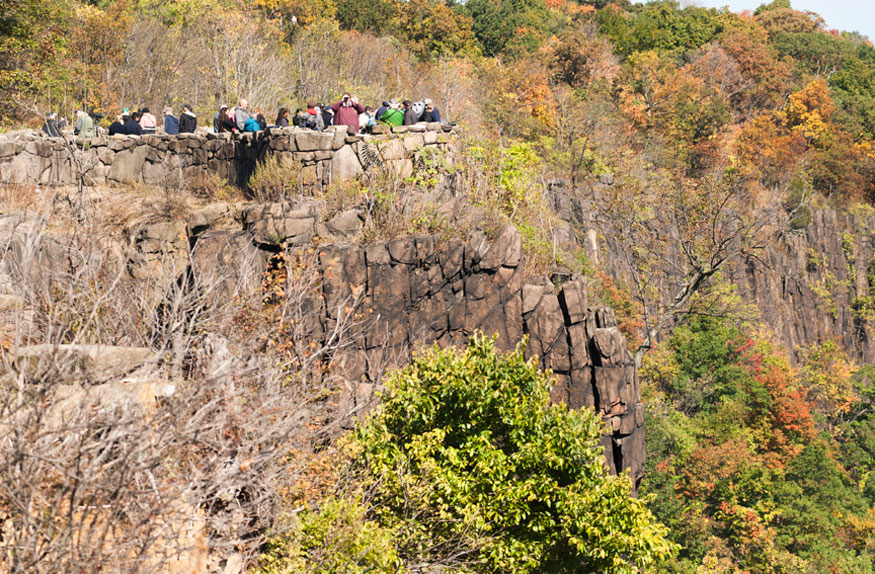Most of the fourteen species of hawks and two species of vultures that occur regularly in New Jersey are seen here each fall. Most are migrants that nest in New England and Canada, while several species, such as the red-tailed hawk, are also year-round residents in the park.
All the photos below were taken at State Line Hawk Watch. The captions show an approximate time frame for migrant species. (Peak migration will usually occur near the middle of the time frame, but smaller numbers of each species may occur before or after the peak.)
Osprey (Pandion haliaetus ). Late August through early October.
Photo: Brandon Caswell.
Bald eagle (Haliaeetus leucocephalus ). Late Aug. through September., late October through mid-November (also some local birds).
Photo: Kevin Watson.
Golden eagle (Aquila chrysaetos ). Late October through mid-November.
Photo: Kumar Patel.
Sharp-shinned hawk (Accipiter striatus ). September through October.
Photo: Kevin Watson.
Cooper’s hawk (Accipiter cooperii ). Late September through October.
Photo: Kevin Watson.
Northern goshawk (Accipiter gentilis ). October through November.
Photo: Kumar Patel.
Broad-winged hawk (Buteo platypterus ). September (most in mid-month).
Photo: Kevin Watson.
Red-shouldered hawk (Buteo lineatus ). September (most in mid-month).
Photo: Kumar Patel.
Red-tailed hawk (Buteo jamaicensis ). October through November (also active local population).
Photo: Kevin Watson.
Rough-legged hawk (Buteo lagopus ). November and later (rare).
(No photos from State Line Hawk Watch — yet.)
American kestrel (Falco sparverius ). Late August through early October.
Photo: Brandon Caswell.
Merlin (Falco columbarius ). Mid-September through mid-October.
Photo: Kevin Watson.
Peregrine falcon (Falco peregrinus ). Mid-September through October (also active local population).
Photo: Kevin Watson.
Northern harrier (Circus cyaneus ). Throughout the season.
Photo: Kevin Watson.
Black vulture (Coragyps atratus ). Throughout the season (also active local population).
Photo: Brandon Casswell.
Turkey vulture (Cathartes aura — this animal shot with an arrow by an idiot, yet surviving…). Mid-October through November (also active local population).
Photo: Brandon Casswell.
Weather is a major factor in producing heavy flights: in general, the first or second day after a cold front, with winds out of the north, will bring the greatest number of birds.


